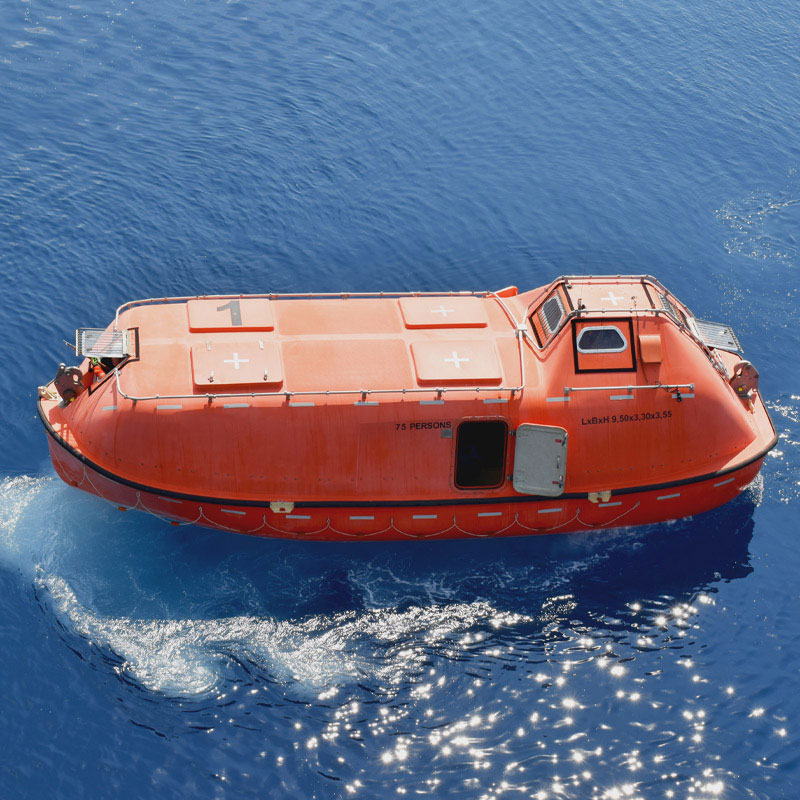Blog Post
What is the Importance of Lifeboat Servicing at Regular Intervals?
Posted By:
Posted On : 04-Sep-2023

Is Lifeboat Servicing Important?
Safety at sea is a non-negotiable priority for the maritime industry. Among the various safety measures in place, lifeboats stand as a critical last resort when all else fails. These essential vessels can mean the difference between life and death during maritime emergencies.
However, like any equipment, lifeboats require regular maintenance to ensure they function reliably when needed most. In this comprehensive guide, we will explore the importance of lifeboat servicing at regular intervals and why shipowners and operators should prioritize it.
What is the Importance of Lifeboat Servicing at Regular Intervals?
Reliability During Emergencies
Lifeboats are designed to be launched swiftly during emergencies, providing a means of escape from a distressed vessel. When properly serviced, lifeboats are more likely to function as intended, ensuring a safe evacuation for crew members. Regular servicing includes checks on critical components such as engines, launching systems, and buoyancy chambers, reducing the risk of malfunction when it matters most.Compliance with Regulations
International and national maritime regulations, such as the Safety of Life at Sea (SOLAS) Convention, mandate regular lifeboat servicing. Compliance with these regulations is not only a legal requirement but also a moral and ethical responsibility to protect the lives of seafarers. Neglecting servicing can lead to penalties, detainment, or even the detention of a vessel.Preventing Corrosion and Deterioration
Lifeboats are exposed to harsh maritime environments, including saltwater, which can lead to corrosion and deterioration of essential components. Regular servicing involves inspecting and maintaining the structural integrity of lifeboats, preventing corrosion, and ensuring they remain seaworthy.Ensuring Operational Readiness
When a maritime emergency occurs, there is no time for delays or surprises. Regular servicing guarantees that lifeboats are operationally ready at all times. This includes testing release mechanisms, examining control systems, and ensuring that equipment such as oars and life jackets are in good working condition.Extending Lifespan
Lifeboats are a significant investment for shipowners. Regular servicing not only ensures their immediate functionality but also extends their lifespan. By addressing minor issues promptly, shipowners can avoid costly repairs or replacements down the line.Safety for Crew and Passengers
Lifeboats are designed to carry crew members and passengers to safety in emergency situations. Well-maintained lifeboats offer a higher level of safety, reducing the risk of accidents or injuries during evacuation. This is particularly crucial when vulnerable individuals, such as children or the elderly, are on board.
Things to Look Out for in Lifeboat Servicing
Effective lifeboat servicing encompasses a range of tasks and checks. Some key aspects to focus on during servicing include:
Engine Maintenance: Ensuring the lifeboat's engine is in working condition, including checking fuel systems, spark plugs, and lubrication.
Launching and Recovery Systems: Testing the launching and recovery systems to guarantee they operate smoothly and safely.
Buoyancy Chambers: Inspecting buoyancy chambers for any damage or leaks that may compromise the lifeboat's buoyancy.
Navigation Equipment: Checking navigational equipment such as compasses, lights, and communication devices to ensure they function correctly.
Safety Equipment: Verifying that safety equipment like life jackets, flares, and first-aid kits are present, accessible, and within their expiry dates.
Structural Integrity: Examining the overall structural integrity of the lifeboat, including the hull, valves, and hatches, for signs of corrosion or damage.
The Role of Technology in Lifeboat Servicing
Modern technology has significantly enhanced the process of lifeboat servicing. The use of advanced tools and diagnostic equipment allows for more accurate and efficient inspections.
Here's how technology contributes to the safety and effectiveness of lifeboat servicing:
Ultrasonic Thickness Gauges: These devices are used to measure the thickness of a lifeboat's hull and structural components. By detecting thinning areas, they help identify potential weaknesses before they become critical.
Digital Inspection Reports: Technology enables the creation of digital inspection reports, which are more comprehensive and easier to store than paper records. These reports include detailed information about the condition of the lifeboat, making it easier for shipowners and authorities to track servicing history.
Remote Monitoring: Some systems allow for remote monitoring of lifeboats, providing real-time data on their status and performance. This proactive approach allows for immediate response to any issues that may arise.
Predictive Maintenance: Advanced algorithms and sensors can predict when specific components of a lifeboat are likely to fail based on their condition and usage. This predictive maintenance helps prevent unexpected breakdowns.
Training Simulators: Technology also plays a role in training crew members in lifeboat servicing procedures. Simulators provide a realistic and safe environment for practice and familiarization.
Conclusion
In conclusion, the importance of lifeboat servicing at regular intervals cannot be overstated. It is not merely a regulatory requirement but a fundamental aspect of maritime safety and the protection of lives at sea. Reliable lifeboats are the last line of defense during emergencies, and neglecting their maintenance can have dire consequences.
Shipowners and operators must prioritize lifeboat servicing, ensuring compliance with regulations, preventing corrosion and deterioration, maintaining operational readiness, extending the lifespan of lifeboats, and enhancing the safety of crew and passengers. Modern technology further elevates the effectiveness of servicing, allowing for more accurate inspections and predictive maintenance.
At Marinetech Safety & Shipping Corporation, we recognize the critical role that lifeboat servicing plays in maritime safety. We offer comprehensive lifeboat inspection and servicing services, utilizing advanced technology and expertise to ensure your lifeboats are in optimal condition and ready for deployment when needed.
Your safety at sea is our utmost priority, and we are committed to providing top-notch services and support for your maritime needs. For all your lifeboat servicing requirements and to learn more about our maritime safety solutions, visit our website at marinetechss.com/services/life-boat-servicing today.